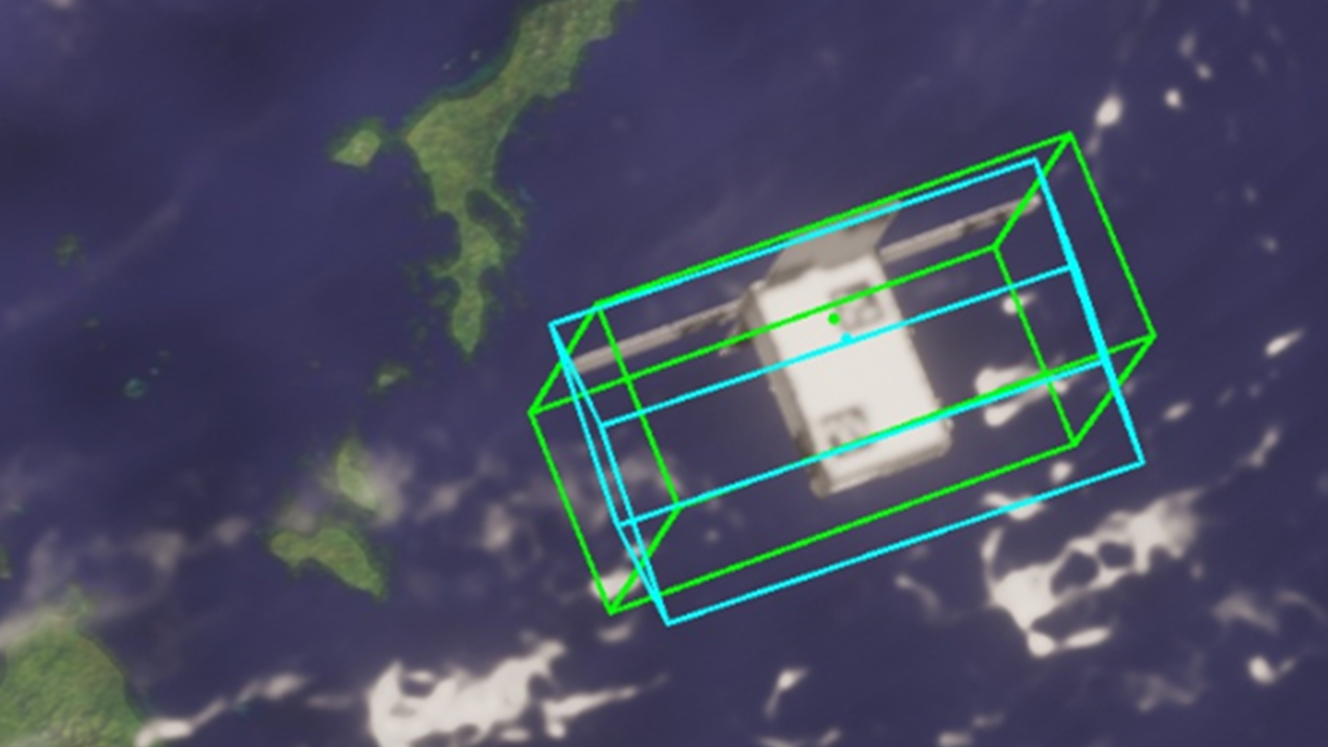
SCOUT Space is using computerized “digital twins” of spacecraft to demonstrate its sensor and software integration capabilities for space domain awareness. (Image: SCOUT Space)
WASHINGTON: Tiny startup SCOUT Space has caught the eye of the Space Force with its software for integrating space observation data taken from numerous satellite sensors, winning a demonstration contract from the Air Force Research Laboratory’s AFWERX technology accelerator.
Under the Phase 2 Small Business Innovation Research (SBIR) award, announced today, SCOUT will work with AFRL’s Intelligence Systems Division and the Space Force’s Delta 2 responsible for space domain awareness (SDA), according to company officials. The firm also has been having conversations with Space Force’s Space Operations Command, including about the possibility of providing SDA payloads for hosting on military satellites used for other missions.
While SCOUT is developing its own sensors and flew a demo version of its space inspection payload, called Vision, last June, CEO Eric Ingram told Breaking Defense on Thursday the wee, 15-person firm — launched in 2019 and headquartered in Alexandria, Va. — is “ultimately a data and service company.”
There is a “roadmap to launch our spacecraft and perhaps develop a constellation,” he said, but based on the current state of the technology and the market, it likely will be several years “before something like a beneficial constellation would exist.”
Therefore, Ingram added, “we’re evaluating capabilities, and the most efficient way to deploy capabilities.”
Sergio Gallucci, SCOUT co-founder and chief technology officer, explained that the 12-month, $749,995 AFWERX contract is really focused on demonstrating its software capabilities. The goal is to integrate unclassified sensor data gathered from multiple space-based cameras with data from military sensors such as ground-based radar and telescopes, he said, and explore operational concepts for use by Guardians in surveying the heavens for threats to US space systems.
“What we are working on, to kind of really get down to brass tacks, in this Phase 2 effort is a kind of data protocol, platform integration effort that ensures that the data that we are gathering … with our space-based sensors can be integrated into the operational ecosystem of Space Force operators,” he said.
Col. Marc Brock, commander of Space Force’s Delta 2, explained in today’s press release that there are challenges to the service’s ability to identify, characterize and keep tabs on adversary activities on orbit.
“We have gaps in our SDA enterprise and we are always in pursuit of new capabilities to fill those gaps,” he said. “SCOUT’s unclassified, space-based non-Earth imaging capability and automatically generated commercial analytic products and services have potential to become critical enablers for Delta 2’s mission.”
Those challenges, as Breaking Defense has reported, range from aging software systems for ingesting sensor data to figuring out how to take some of the routine data-crunching burden off human analysts via automation. Further, up to now, the few satellites that can keep eyes on the sky — such as the six Geosynchronous Space Situational Awareness Program birds — used stovepiped infrastructure to receive and analyze their data.
Gallucci explained that another problem is that disaggregated space-based sensors housed on proliferated satellites, or carried as hosted payloads on satellites with other missions, can hoover up a lot of imagery that can easily overwhelm the ability to process it.
SCOUT’s software is being designed to alleviate all of these problems, using on-board processing, he said. “We are trying to make the data as streamlined as possible before we deliver it … and ensuring that the data generated can support the mission effectively and not just drown out everything else that people are doing with noise.”
SCOUT also is performing “trade studies” on the efficiency of using proliferated space sensors to routinely sweep large volumes of orbital real estate to detect abnormal behaviors versus tasking them to home in on certain areas and/or suspected baddies. Gallucci said that so far, it is proving most likely that some kind of “hybrid” approach actually would work best.
The demo contract with AFWERX is mostly being conducted using so-called digital twinning techniques that allow on-orbit operations to be simulated on the ground, Gallucci said, although the artificial intelligence/machine learning software also has been trained using data acquired from the company’s own on-orbit sensor.
Ingram said that the company hopefully will launch two more payloads early next year hosted by Momentus, another startup that intends to operate a fleet of orbital transfer vehicles that will carry other satellites to orbit and be able to perform rendezvous and proximity operations. SCOUT’s Vision system will allow operators to “see” to maneuver.
“There’s increased interest in system deployment actually on orbit,” he said. “We have been making a lot of noise within the ecosystem, to demonstrate how things can be done faster, more effectively and in a way that can more seamlessly integrate the dual use capabilities that we have been commercially developing into the warfighter toolbox.”
HASC chair backs Air Force plan on space Guard units (Exclusive)
House Armed Services Chairman Mike Rogers tells Breaking Defense that Guard advocates should not “waste their time” lobbying against the move.



























